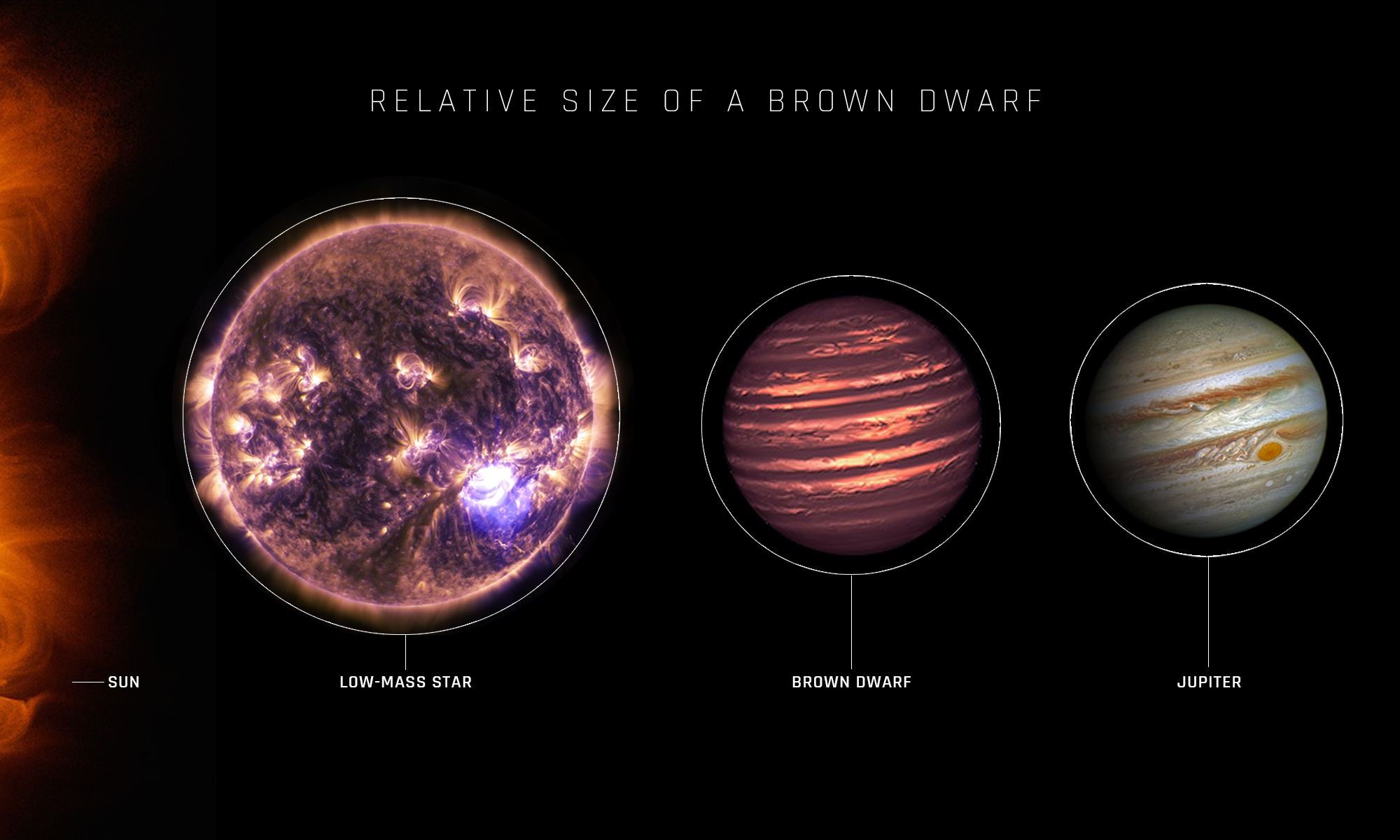Nuclear fusion is what separates stars from planets. Stars are massive enough to fuse hydrogen in their cores, while planets are not. But in between these two categories are brown dwarfs, which are massive enough to experience some nuclear fusion, just not hydrogen. The largest of them are hot and star-like. The smallest of them are barely warm enough to bake a pizza.
The smallest hydrogen-fusing stars are known as red dwarfs. They are known as M-type dwarfs, and their minimum mass is about 78 Jupiter masses. Red dwarfs around this mass are about the size of Jupiter, but with greater density. They are also much hotter, with a surface temperature of around 2,800 K, compared to Jupiter’s chilly 165 K.
Between 65 and 78 Jupiter masses, the central core of a body is enough to fuse lithium. Below 65 Jupiter masses but above about 13 Jupiter masses, there is enough mass to fuse deuterium. Neither of these produces a great deal of heat, so brown dwarfs aren’t bright in the visible spectrum. So astronomers categorize them by their infrared spectrum.

The warmest brown dwarfs are known as L-type, with surface temperatures between 1,300 and 2,000 K. Then there are T-type dwarfs with temperatures between 700 – 1,300 K. and Y dwarfs with temperatures 300 – 700 K. On the coolest end of brown dwarfs, it seems a bit silly to treat them as star-like objects. After all, an object smaller than Jupiter with a surface temperature cooler than a warm summer day hardly seems like a star. So should we really make deuterium fusion a cut-off for brown dwarfs? Why not just call them planets? After all, even a planet like Earth is heated in part by nuclear decay. It’s also difficult to get an accurate mass for small brown dwarfs, making it difficult to determine which side they fall on the mass cutoff for brown dwarfs.
An alternative approach is to look at whether they can be seen at radio wavelengths. True stars emit lots of radio light. They have strong magnetic fields and dense plasmas that make them radio bright. Cool brown dwarfs, on the other hand, don’t emit much radio light. In this respect, they are like large planets, which mostly just emit infrared. There are planets such as Jupiter that emit some radio light due to aurora, but not as an overall body. So what if the cutoff for a star-like body is whether they emit plenty of radio light?
As it turns out, a radio-bright brown dwarf can still be pretty cool. Astronomers have recently observed radio emissions from a brown dwarf with the awkward name WISE J062309.94?045624.6. It’s a T-type brown dwarf with a mass of about 40 Jupiters and a surface temperature of about 700 K, or 425 °C. That’s pretty hot by human standards, but downright cool when compared to the Sun’s 5,700 K.
Astronomers aren’t sure just how such a cool body can generate radio light, but one strong possibility is a combination of a strong magnetic field and fast rotation. This could generate the kind of dynamo effect that would emit bursts of radio light. This is just the first example of a radio-bright ultracool brown dwarf. If we can find other similar stars, we should be able to understand the mechanism behind their radio emissions.
Reference: Rose, Kovi, et al. “Periodic Radio Emission from the T8 Dwarf WISE J062309. 94–045624.6.” The Astrophysical Journal Letters 951.2 (2023): L43.

